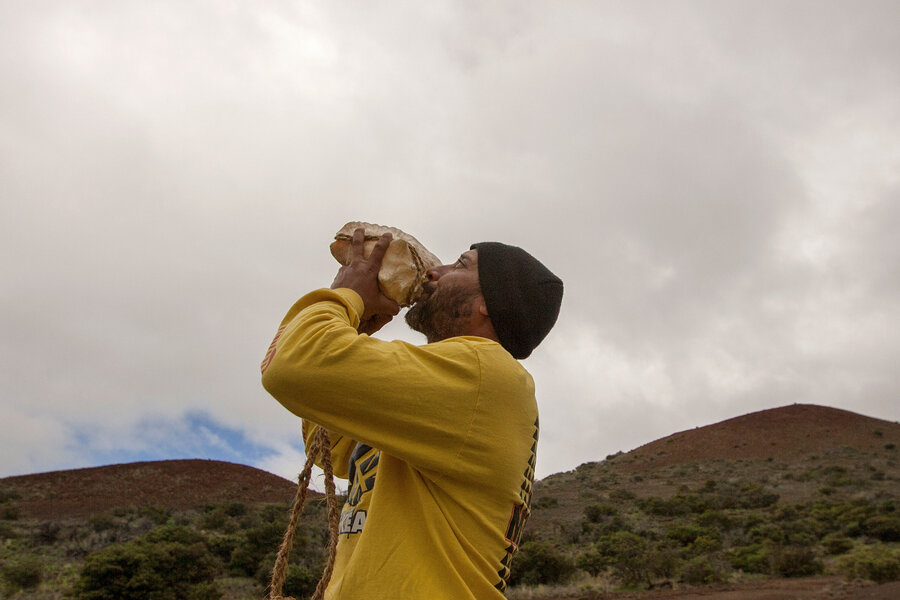Hawaii's TMT: Did indigenous rights just beat astronomical discovery?
Loading...
A Hawaiian Supreme Court ruling Wednesday on a contentious proposal to build a large, Thirty Meter Telescope atop Mauna Kea validated the rights of indigenous Hawaiians.
The court ruled that the state of Hawaii should not have given the telescope project a permit without formally hearing the position of the Native Hawaiians – who hold the Mauna Kea mountaintop sacred – first. This ruling emphasized that the state must value concerns from the indigenous people who brought the lawsuit and who slowed and prevented work on the telescope for months when they protested by camping on the mountain.
Officials behind the Thirty Meter Telescope (TMT) wrote on Twitter that the Hawaii Supreme Court ruled against the state's process, not against the telescope project.
The international telescope consortium, led by universities in California and Hawaii, insists it has made every effort to accommodate cultural and environmental concerns from Hawaiians, including selecting a site without any endangered plants or wildlife, archaeological sites, or shrines.
Mauna Kea, already the site of other telescopes smaller than the proposed project, is the best in the world for astronomy, according to TMT's website.
"It’s been said that the 'best night' at other telescope locations is just an 'average' night on Maunakea. And the “best nights” on Maunakea cannot be found anywhere in the world."
The opposition TMT has faced from Native Hawaiians is neither precisely religious nor entirely geographic. Kealoha Pisciotta, a spokeswoman for the group called Mauna Kea Hui that sued Thirty Meter Telescope, rejected media characterizations of the case as a conflict between religion and science, reported Dennis Overbye for The New York Times.
"This is a very simple case about land use,” she told The New York Times. “It’s not science versus religion. We’re not the church. You’re not Galileo."
One of the Native Hawaiian leaders Lanakila Mangauil, who has used Facebook pages to call for protests during the debate, posted a similar statement disagreeing with the idea that Native Hawaiians' claims are overtly religious.
"Look at the ruling itself," he wrote. "It wasnt the SPIRITUAL, or even the environmental legalities that stopped this. It was the fact that due process was not followed."
The court ruling does not prevent Thirty Meter Telescope from trying again, though the company, which partnered with California Institute of Technology, the University of California, and the University of Hawaii, has not yet said whether it will. The company could begin the permit process once more, and the state would presumably hold a hearing. The native Hawaiians who hold the mountaintop sacred say they are ready for any future efforts to build there.
A similar conflict 10 years ago – of scientific discovery versus indigenous rights – was a loss for astronomers in Hawaii. Numerous lawsuits led to a rescinded permit to build outriggers on another telescope on Mauna Kea, The New York Times reported.
On the same day that the Hawaiian High Court ruled on the TMT, the US Supreme Court granted a stay in another case involving indigenous rights in Hawaii, reported Timothy Hurley for the Honolulu Star Advertiser. The order stops an organization given power by the state of Hawaii to elect delegates to a council on Native Hawaiian self-governance from certifying election winners. The order is pending a ruling by the 9th Circuit Court of Appeals in the next issue of indigenous rights for Hawaii – that is, whether the "race-based" election is constitutional.








